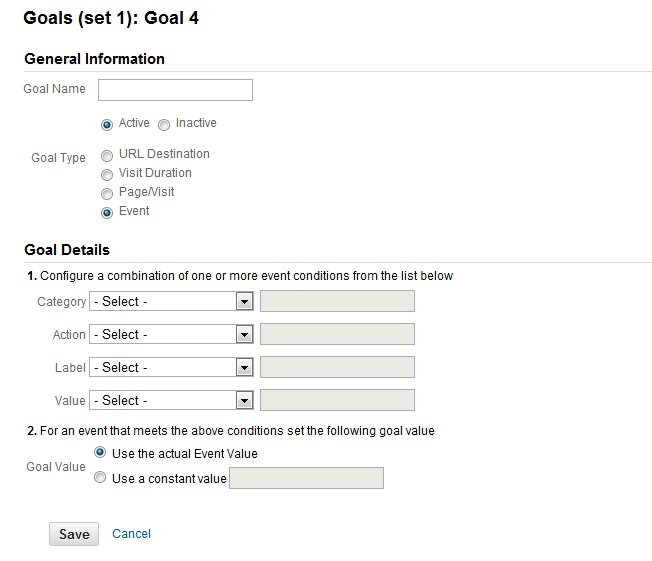Learn What Data Is Google Analytics Goals Unable to Track
Learn What Data Is Google Analytics Goals Unable to Track
Blog Article
Revealing the Blind Destinations: Recognizing What Google Analytics Goals Can not Determine
In the realm of electronic analytics, Google Analytics stands as an effective device for tracking and analyzing online customer communications. Recognizing what Google Analytics goals can not measure is crucial for getting a thorough view of customer behavior and engagement.
Individual Behavior on External Platforms
Understanding exactly how users connect on outside platforms is essential for enhancing on the internet techniques. External platforms, such as social media networks, reference websites, and on-line discussion forums, play a considerable function in driving web traffic to a business's website. By evaluating individual actions on these systems, organizations can get important understandings right into the effectiveness of their advertising initiatives and the preferences of their target audience.
One trick facet of customer actions on outside systems is the recommendation resource. By tracking where the customers are originating from, organizations can determine which platforms are driving one of the most traffic to their website. This details can aid companies assign their sources better, focusing on the platforms that generate the very best results.

Offline Conversions and Communications
Assessing customer actions on exterior platforms supplies useful understandings right into on the internet approaches; however, taking into consideration offline conversions and communications is just as imperative for a detailed understanding of a business's general performance. While Google Analytics succeeds at tracking on-line interactions, it drops short in capturing the complete customer journey that commonly consists of offline touchpoints. Offline conversions, such as in-store acquisitions or phone queries, play a significant role in several organizations' success. Ignoring these interactions can cause an altered sight of the performance of advertising and marketing projects and overall service efficiency.

Attribution Beyond Last Click
When delving into the realm of electronic advertising and marketing analytics, it comes to be vital to look beyond the single touchpoint of the last click for an extra detailed understanding of acknowledgment. While Google Analytics provides valuable insights into individual actions, depending solely on last-click acknowledgment can be limiting - what data is google analytics goals unable to track. Acknowledgment designs that surpass the last click supply an extra nuanced view of the consumer trip, taking into consideration all the touchpoints that cause a conversion
Attribution past the last click permits marketing professionals to designate credit rating to various communications along the conversion course, providing a clearer photo of the effectiveness of various advertising and marketing channels. By discovering multi-touch attribution designs such as direct, time degeneration, or position-based attribution, services can better assign their advertising and marketing budgets and maximize their approaches for optimal effect.
Understanding the impact of each touchpoint in the conversion process is important for making notified choices and maximizing ROI. By embracing attribution past the last click, companies can go to the website get deeper insights into client behavior and customize their advertising efforts much more successfully.
Cross-Device and Cross-Browser Monitoring

In a similar way, cross-browser tracking enhances cross-device tracking by catching user behavior as they change in between different web browsers. Recognizing just how individuals engage with web sites on numerous internet browsers can aid online marketers maximize their on the internet experiences to make sure uniformity and performance throughout various platforms.
Qualitative Data and User Intent
Comprehending user intent via qualitative information analysis is important for developing targeted digital marketing techniques that resonate with the requirements and choices of the target market. Qualitative information offers insights right into the 'why' behind user actions, losing light on inspirations, feelings, and preferences that quantitative information alone can not record. By assessing individual comments, comments, and communications, online marketers can uncover valuable details about user intent, allowing them to customize their messaging, content, and offerings to much better straighten with what their target market is looking for.
Qualitative data likewise aids in recognizing the context in which customers engage with a site or application. This contextual understanding allows marketing experts to produce more relevant and customized experiences, inevitably driving higher interaction and conversion prices. By delving into individual intent via qualitative data evaluation, organizations can get a much deeper understanding of their target audience, leading to more reliable marketing methods that satisfy customers' needs and assumptions.
Verdict
Finally, Google Analytics goals have restrictions in gauging individual actions on outside platforms, offline conversions, acknowledgment past last click, cross-browser and cross-device tracking, and qualitative data related to individual intent. what data is google analytics goals unable to track. It is necessary for services to be familiar with these unseen areas in order to supplement their the original source information evaluation with other devices and methods to obtain an extra detailed understanding of their target market and enhance their overall electronic marketing methods
By analyzing user actions on these platforms, companies can obtain important understandings right into the performance of their advertising initiatives and the preferences of their target audience.
Examining customer habits on exterior systems gives useful understandings right into on the internet strategies; nevertheless, thinking about offline conversions and interactions is equally vital for an extensive understanding of a firm's general efficiency.In electronic advertising analytics, moving past last-click acknowledgment to check out cross-device and cross-browser tracking is vital for acquiring an alternative understanding of customer communications across different platforms and devices. By examining customer responses, remarks, and interactions, marketers can reveal important details about user intent, permitting them to tailor their messaging, content, and offerings to better align with what their audience is looking for.
By diving right into user intent via qualitative data evaluation, services can obtain a much deeper understanding of their target audience, leading to more effective marketing techniques that satisfy individuals' expectations and demands.
Report this page